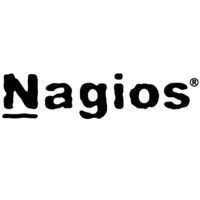Need advice about which tool to choose?Ask the StackShare community!
Icinga vs PRTG: What are the differences?
Introduction
Icinga and PRTG are both network monitoring tools that help organizations ensure the stability and performance of their IT infrastructure. However, there are key differences between the two that make them suitable for different use cases.
Architecture: Icinga is an open-source monitoring tool that follows a distributed architecture, allowing users to set up multiple monitoring nodes to handle a higher workload. PRTG, on the other hand, is a centralized monitoring solution where all monitoring data is stored in a single database.
Customization: Icinga provides a high level of flexibility and customization options, allowing users to modify and extend its functionality according to their specific requirements. PRTG, while offering some customization options, is more focused on simplicity and ease of use, providing pre-configured sensors and templates for quick setup.
Licensing: Icinga is licensed under the GPL (GNU General Public License), which means it is open-source and free to use. PRTG, on the other hand, has a commercial license, with a free version available for limited monitoring. Advanced features and unlimited sensors require a paid license.
Scalability: Due to its distributed architecture, Icinga has better scalability compared to PRTG. Users can add multiple monitoring nodes to handle an increasing workload, making it suitable for large-scale deployments. PRTG, while capable of handling a significant number of sensors, might face limitations when dealing with extremely large networks.
Integration: Icinga offers extensive integration capabilities with various third-party tools and services, including popular notification systems like Slack and PagerDuty. PRTG also provides integration options but may have limitations in terms of the range and availability of integrations.
User Interface: PRTG is known for its user-friendly and intuitive web interface, making it easy for users to navigate and configure their monitoring setup. Icinga, while offering a web-based interface, may have a steeper learning curve due to its advanced customization options and configurability.
In Summary, Icinga offers a flexible and customizable monitoring solution with distributed architecture and extensive integration capabilities, while PRTG provides a simple and user-friendly centralized monitoring system with a focus on ease of use.
- free open source
- modern interface and architecture
- large community
- extendable I knew Nagios for decades but it was really outdated (by its architecture) at some point. That's why Icinga started first as a fork, not with Icinga2 it is completely built from scratch but backward-compatible with Nagios plugins. Now it has reached a state with which I am confident.
Cons of Icinga
Cons of PRTG
- Poor search capabilities1
- Graphs are static1
- Running on windows1
























